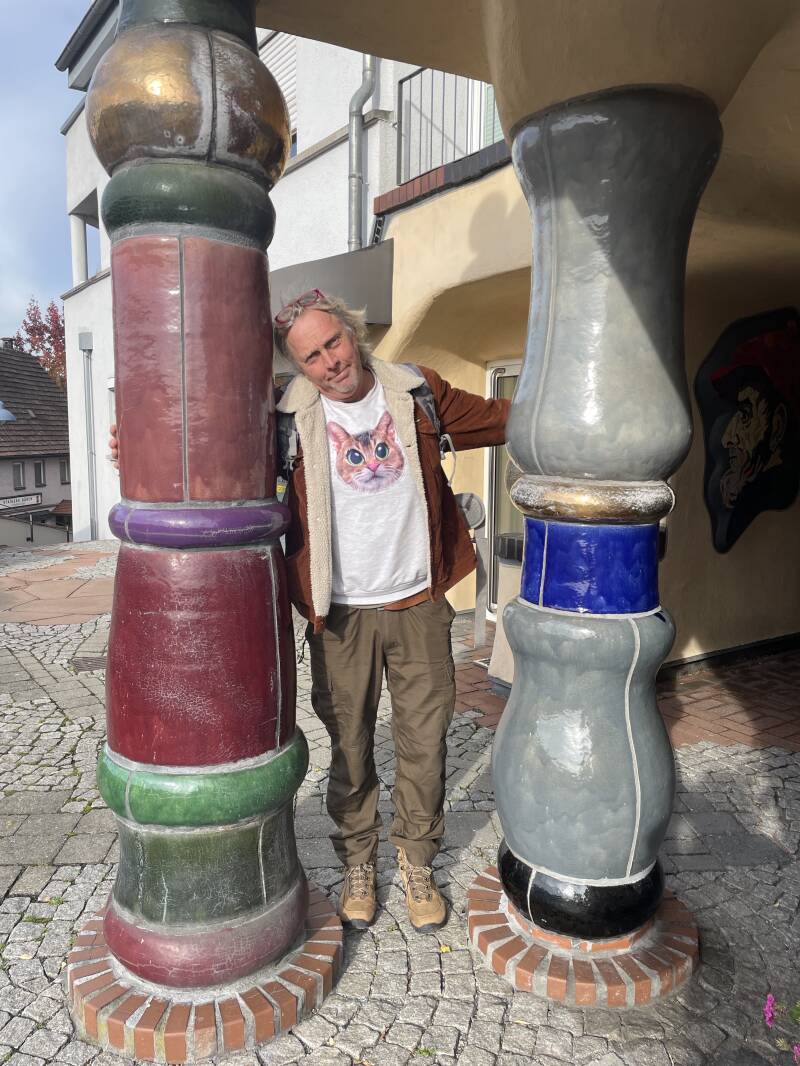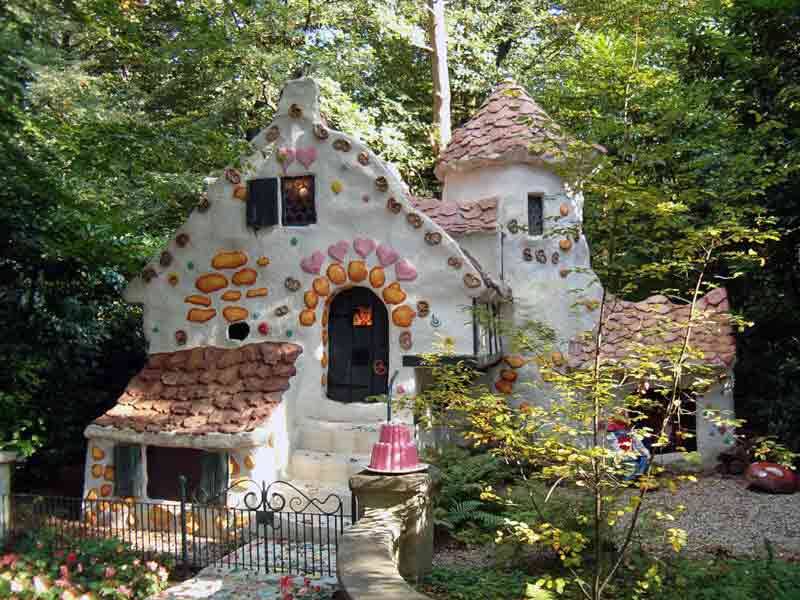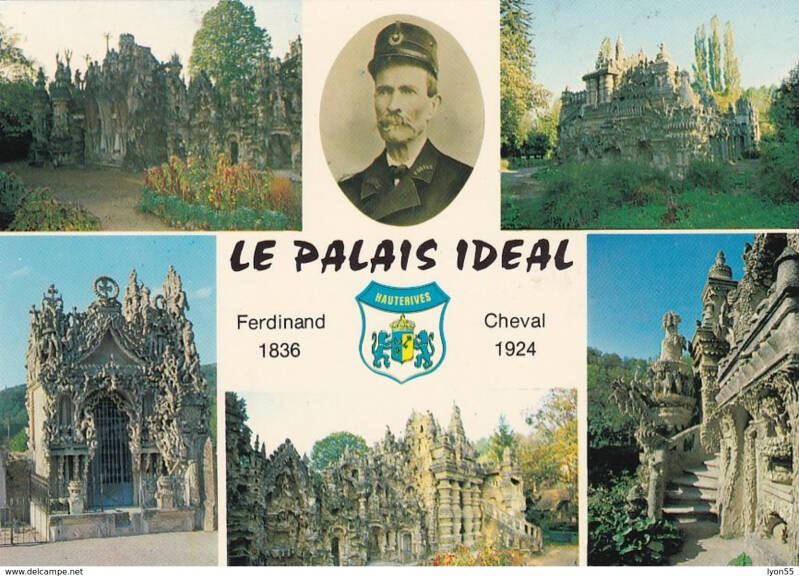The construction of Drijfpaleis is a design by Gert Coldewijn, and it started on 22 October 2001 at Helldorfer shipbuilding in Arnhem. After weeks of welding, the hull could be wheeled out to be christened Quo Vadis II on 19 November 2001 with a bottle of beer (we had forgotten the champagne). After this, the crane in the harbor hoisted the barge into the water and it was sailed to its current place, which was a historic moment because she remained afloat. And so Quo Vadis II came to lie beside Quo Vadis I, the little houseboat from 1937 on which we lived, and construction could begin!
I was not hampered by any knowledge of the subject. There was no clear idea of how the boat should eventually be, but under the inspiring guidance of architect Norbert Valk, the wood frame construction was set up and in the process you begin to understand how it should be.
Pannebier! Due to relationship troubles the construction stopped and after many negotiations with the bank the construction could be continued after one and a half years. Now the dream I've had since 1984 to build a Bed & Breakfast suddenly came closer. In 1984, the movie "Local Hero" came out. In that movie a hotel owner is so friendly and relaxed with his work, I wanted that too.

Because of the beautiful location of the boat and the eternal vacation feeling you get on the water, the idea came up to give the boat a 'Tuscan' look.
Drijfpaleis was born!
Imagine the ultimate vacation: vibrant, warm colors, stunning architecture, endless sunshine—this is the life you dream of, right here in Arnhem, aboard a floating palazzo. Unlike traditional houses, boats aren't bound by strict building regulations, allowing me to be free. There’s always room to make things more colorful, more beautiful, and more unique—though, some my say worse. Thankfully, I’ve been fortunate to collaborate with friends and acquaintances, each contributing their own expertise and creativity. Together, we inspire one another, fueling our enthusiasm and pushing boundaries. My hope is that this boat and its garden can serve as a spark of inspiration for visitors, encouraging everyone to transform their surroundings into something fun. Embrace your personal taste and style. Down with caution—let your imagination flow!


Inspiration

Friedensreich Hundertwasser
born Friedrich Stowasser, was an Austrian artist and architect. He was best known for the colorful buildings he designed and was an advocate of a people- and environment-friendly method of construction
Justo Gallego Martìnez
he was a farmer and bullfighter. In 1953 he joined a Trappist abbey, but eight years later he had to leave when he was diagnosed with tuberculosis and his health deteriorated. He began to build a cathedral on a plot he had inherited from his parents. He had promised that when he recovered from tuberculosis, he would build a shrine in honor of the Nuestra Señora del Pilar to whom he had prayed.


De efteling
De Efteling is one of the oldest theme parks still open in the world: nature park de Efteling opened on May 11, 1951. The roots of the current park lie in 1935, when the R.K. Sport- en Wandelpark opened on May 19. The plans to build a sports field originated in 1933 and were initiated by pastor De Klijn and chaplain Rietra. This plan was later expanded to include a playground and teahouse.

Sacro Bosco
Pier Francesco Orsini, known as Vicino, built it from the middle of the 16th century and completed the first part of the work as early as 1552. Vicino, lord of Bomarzo until 1581, had the rocks sculpted on site, animating them and giving them forms, sometimes threatening and sometimes convincing, of dreamlike creatures. The Bosco differs from Italian gardens, and although it is part of the architectural-naturalistic culture of the second half of the sixteenth century, it constitutes a unicum that gives life to a hermeneutic labyrinth of silences, allusions and illusions.

Antonio Gaudi
the spanish great magician, born in 1852. At seventeen, he moved to Barcelona to study architecture at the Escola Superior d'Arquitectura (College of Architecture). To support himself he had side jobs with architects in the city. Gaudí was not a good student but stood out because of his individuality. For example, in his graduation project "for the atmosphere" he drew a completely irrelevant hearse on a construction drawing of a gatehouse of a cemetery.



Joseph Ferdinand Cheval
was a French letter carrier who devoted 33 years of his life to building his Palais idéal in Hauterives, which is considered one of the most remarkable expressions of naive architecture. Cheval began construction in April 1879.
https://www.facteurcheval.com/


Ra Paulette
is an American cave sculptor based in New Mexico who digs into hills to sculpt elaborate artistic spaces. Since he began sculpting in 1990, he has dug more than a dozen caves in New Mexico.

Kunsttuin Nederlands Kremlin
Ger Leegwater, 1945, brings his imagination to life, from different materials he makes special structures and sculptures . The Italian architects Bernini and Borromini from the baroque period have inspired Ger to start building himself. Also the influence of the Russian-Italian architect Rastrelli, designer of the Winter Palace, can be seen in the buildings of the Dutch Kremlin.